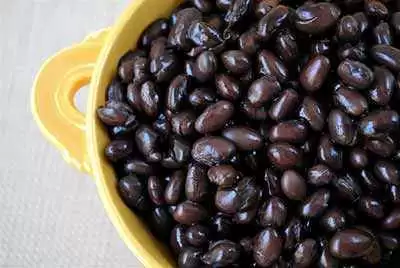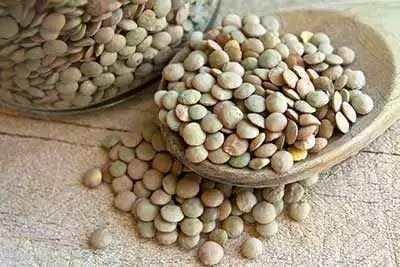
Celiac.com 12/27/2016 - For many years, nutritionists, doctors and the media declared a low-fat diet as an effective method of losing weight, lowering the level of so-called "bad cholesterol", and preventing health problems. We have since seen that it is not only fat intake but also the type of fat we eat is of paramount importance. So-called "bad fats" increase the level of LDL cholesterol and increase the risk of certain diseases, in contrast to the good fats that protect the heart and promote general health. Good fats, such as the ubiquitously advertised omega -3 are essential to physical and emotional wellness.
Dietary health is becoming increasingly important to the consumer whose awareness is growing and will continue to grow. It is therefore important that in the face of these facts the wise producer will not only follow the trends set by the consumer but will try to get ahead of these shifts so he will be prepared when the new client asks for products suggested by these new insights.
Celiac.com Sponsor (A12):
Walking through the store, it is easy to see health-oriented products displayed on the shelves, as well as customers looking for these products. When it comes to fats, the client is offered non-fat ice cream, low fat candies, cookies and cakes.
While the number of low-fat products is growing, paradoxically increasing levels of obesity are also on the rise in our society. Thus, it becomes clear that low fat products and diets are not effective in the fight against obesity.
Contrary to what has been widely proclaimed, fat is not always a negative factor in maintaining good health and a slim figure. Saturated fats and trans fats are unhealthy for humans. However, initially, all groups fats were considered the cause of the adverse consequences listed in the beginning paragraph. As it turned out, there are fats such as monounsaturated fat, polyunsaturated fat and omega-3 fatty acids that have the opposite effect. In fact, healthy fats play a huge role, affecting not only the appearance of the silhouette but also, human well-being and mental agility throughout life. For example, they are necessary for the proper development of a child's brain.
This article is not a waiver for eating fat but suggests minimizing the consumption of those fats that negatively affect humans.
To better understand these concepts about fats we should explain the way fats are grouped. In addition to the simplest categories of fat according to whether they come from animals or plants, they can be divided by the presence of bonds between carbon atoms in the chain and so on:
- unsaturated fatty acids containing a hydrocarbon chain having a double bond , are present in large quantities in plants. At room temperature they are usually liquids.
- monounsaturated fats - one unsaturated bond
- polyunsaturated fats - many unsaturated bonds
- saturated fats contain fatty acids having a hydrocarbon chain with only single bonds
Trans fats are characterized by a specific molecular shape. They are found in natural animal fats, milk, and other dairy products. In larger quantities of solids they are present in vegetable fats such as margarine. Trans fats are normally fat particles that have been deformed by a process called hydrogenation . During this process, liquid vegetable oils are heated and combined with hydrogen gas . Partial hydrogenation of vegetable oils makes them more stable and less prone to loss of freshness, which is very good for food manufacturers, but not necessarily for the health of consumers.
Monounsaturated and polyunsaturated fats are known to be "good" fats, and are thought to have a positive effect on heart health, cholesterol levels and general health.
Saturated fats and trans fats are presented as "bad" fats because they increase the risk of disease and increase cholesterol levels.
With so many different sources of fat in the diet, and increasing consumer awareness of these fats, customers will strive to reduce consumption of those ingredients that have a negative impact on their health. Thus, they will limit the intake of trans fats and saturated fats by the avoidance of products containing them.
What is the impact of these facts on the behavior of the confectionery industry?
Firms engaged in the production of confectionery fats have, for several years, been developing technologies and offering products with reduced trans and saturated fat content. Manufacturers are trying to limit the hydrogenation of oils and fats and produce other methods for processing fats and taking advantage of properties of existing fats. Many of those technologies are still being developed.
In accordance with Article 30 REGULATION OF THE EUROPEAN PARLIAMENT AND OF THE COUNCIL (EU) No 1169/2011 of 25 October 2011 on the provision of information to consumers about food, which will take effect from 13 December 2014, the mandatory nutrition declaration shall include the following elements:
- a) energy value and
-
 the amounts of fat, saturates, carbohydrates, sugars, protein and salt.
the amounts of fat, saturates, carbohydrates, sugars, protein and salt.
Therefore, please note that in future, European producers will have to adapt their labels to comply with the new laws. Consumers will have easier access to information on the composition of fatty products in foods, which can have a significant impact on their choices at the time of purchase.
If you look for information on healthy eating in the basic knowledge base of general consumer... on the internet, you can find tips such as:
- Limit your intake of saturated fat to less than 10 % of calories
- Limit trans fats to 1% of calories
- The main source of trans fats in the diet is baked goods and snacks such as cookies, crackers , cakes , muffins, pizza dough , some types of bread and hamburger buns
This shows how important the selection and appropriate control of fats is for confectionery production. Moreover, the producer is required to maintain a constant and reproducible quality of raw materials that can affect the final product, avoiding any unexpected ingredients. Growing consumer awareness can be seen today when shoppers pay much more attention to the labels and what is written on them. Increasingly, this is a decisive factor in their choice of whether to buy a particular product.
On the other hand, the desired taste of food imparted by those elements that are not always the healthiest for people offers another perspective on confectionery food. We should keep in mind that when eating so-called sweets, we do not do it to be healthier and more beautiful. The most common motive is pleasure. If we were to look at food only from a chemical point of view, just the chemical names and function of substances that emit the aroma of coffee would stagger the average person. But what would coffee be like without its aroma? A truly conscientious consumer knows these facts.
Again, it all comes down to common sense and moderation. Those who are able to be moderate are those who do not have to fear. But you cannot disregard the information flowing from the world of science. If we are able to produce safer food for people, we should go in this direction.










Recommended Comments
There are no comments to display.